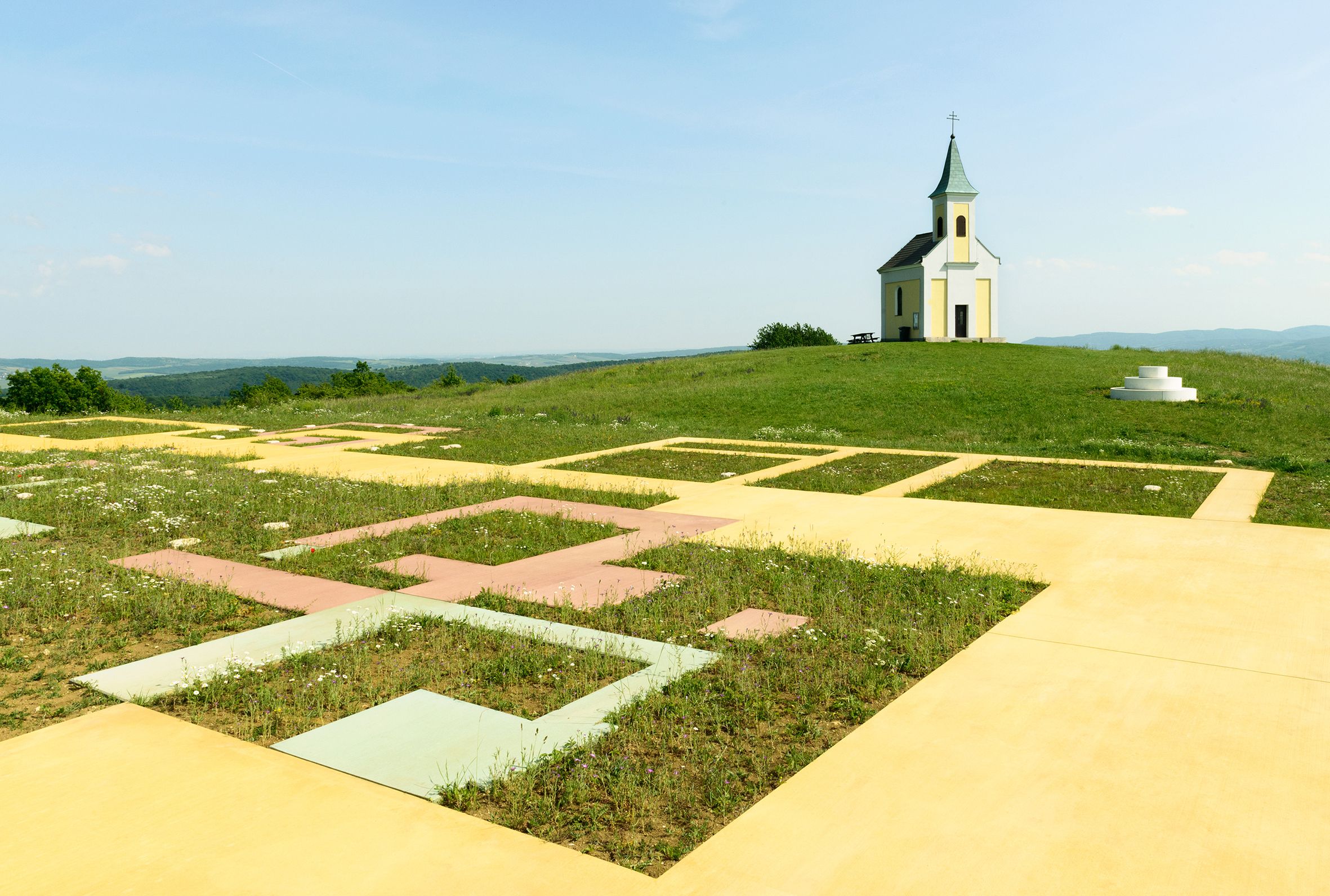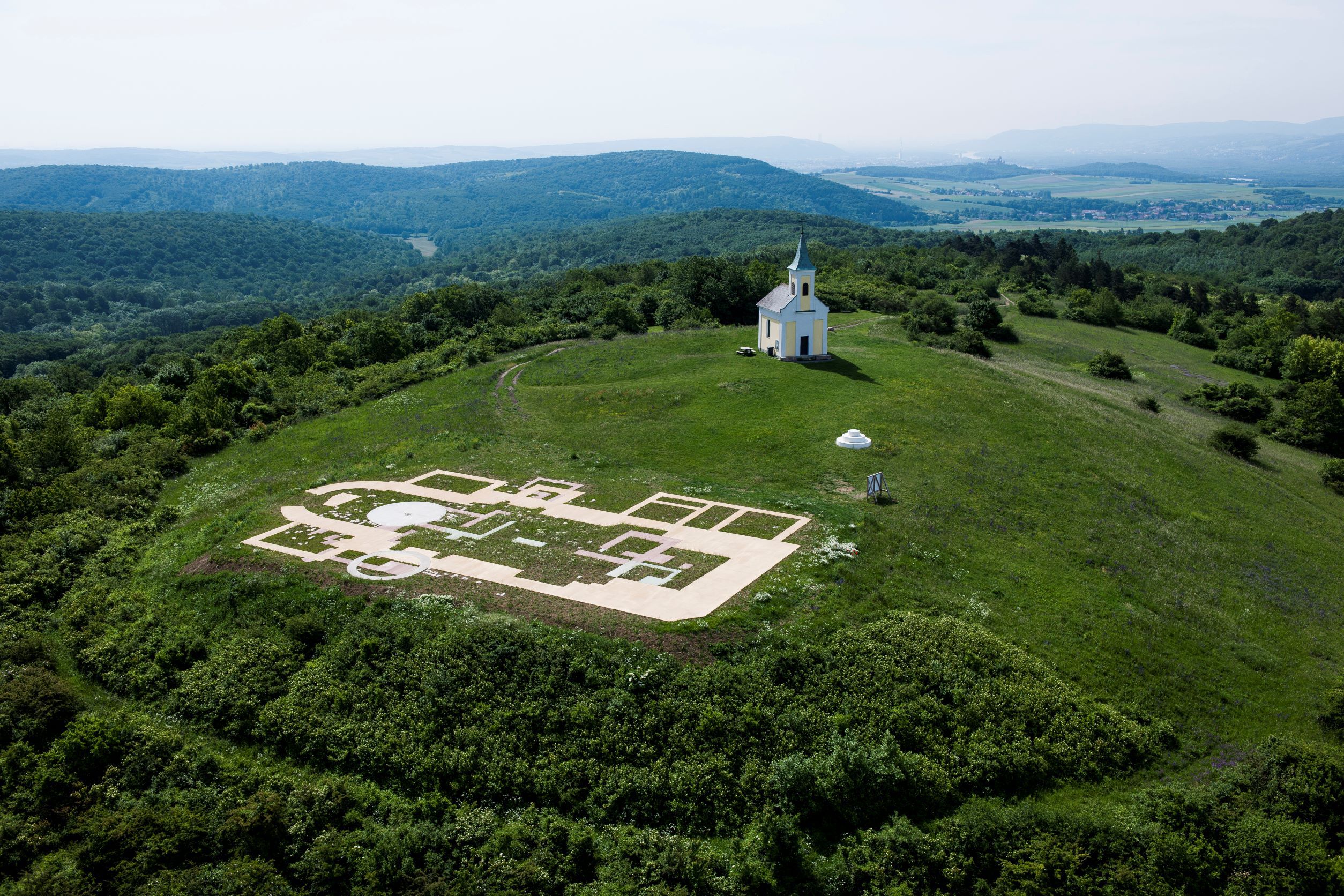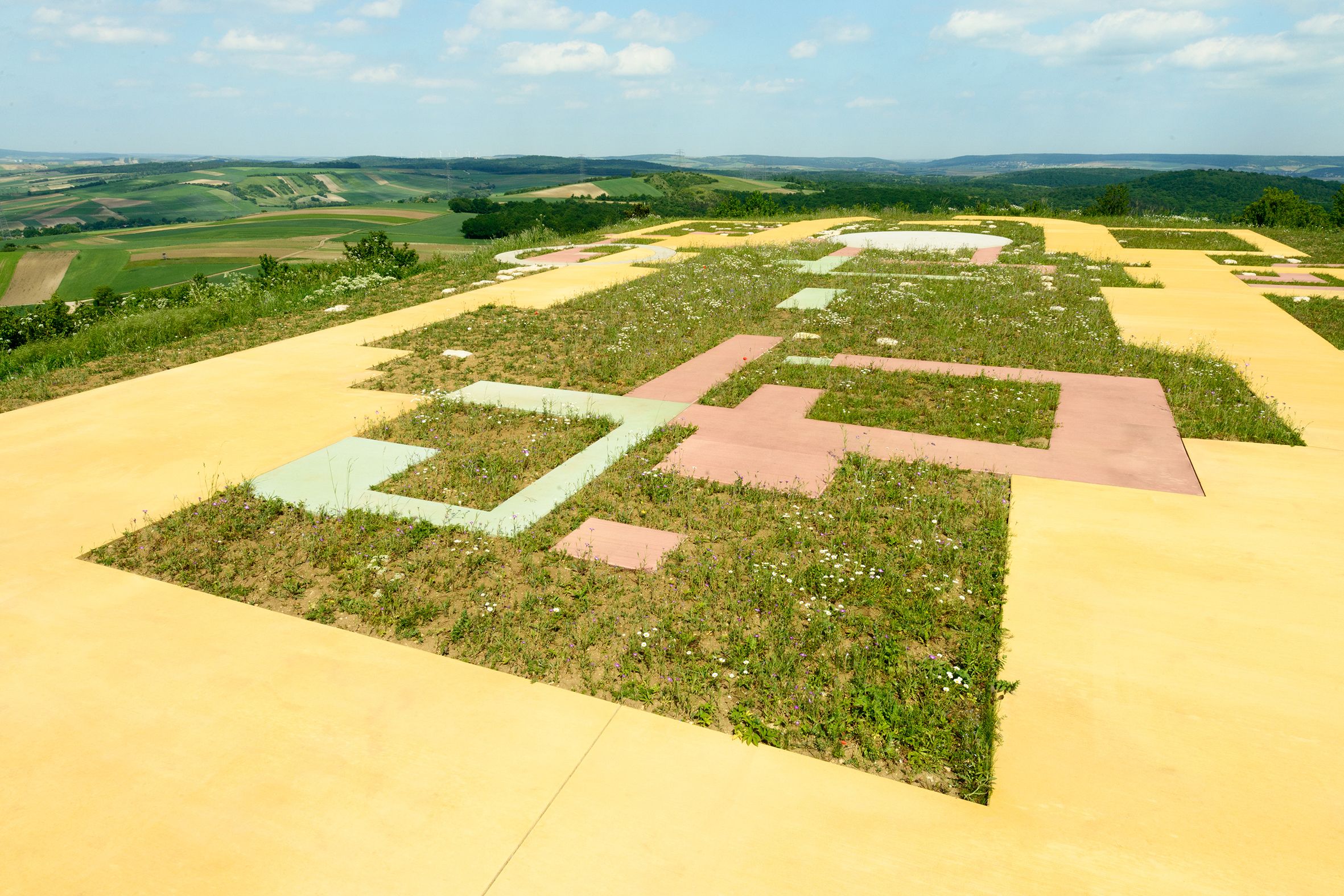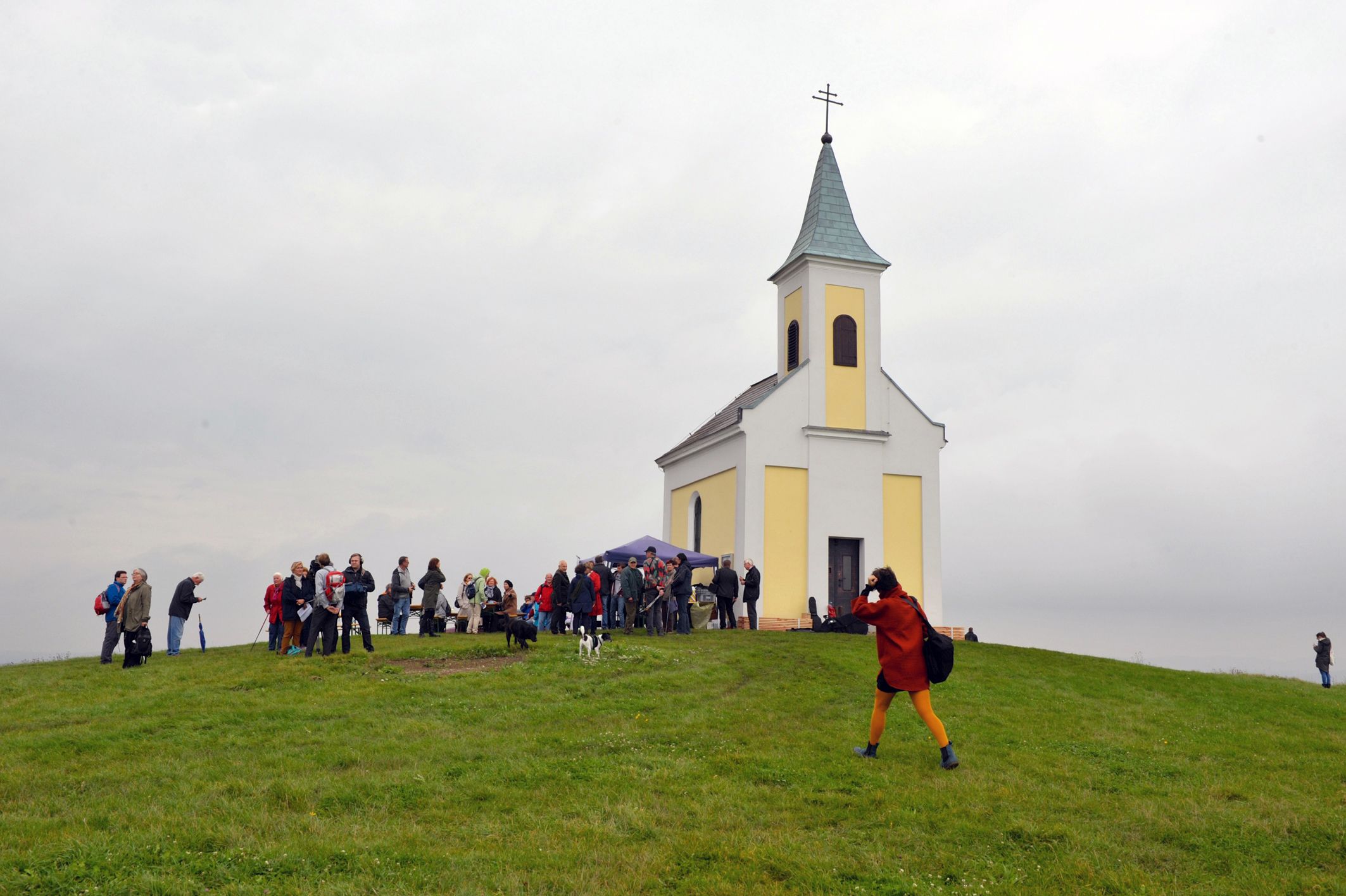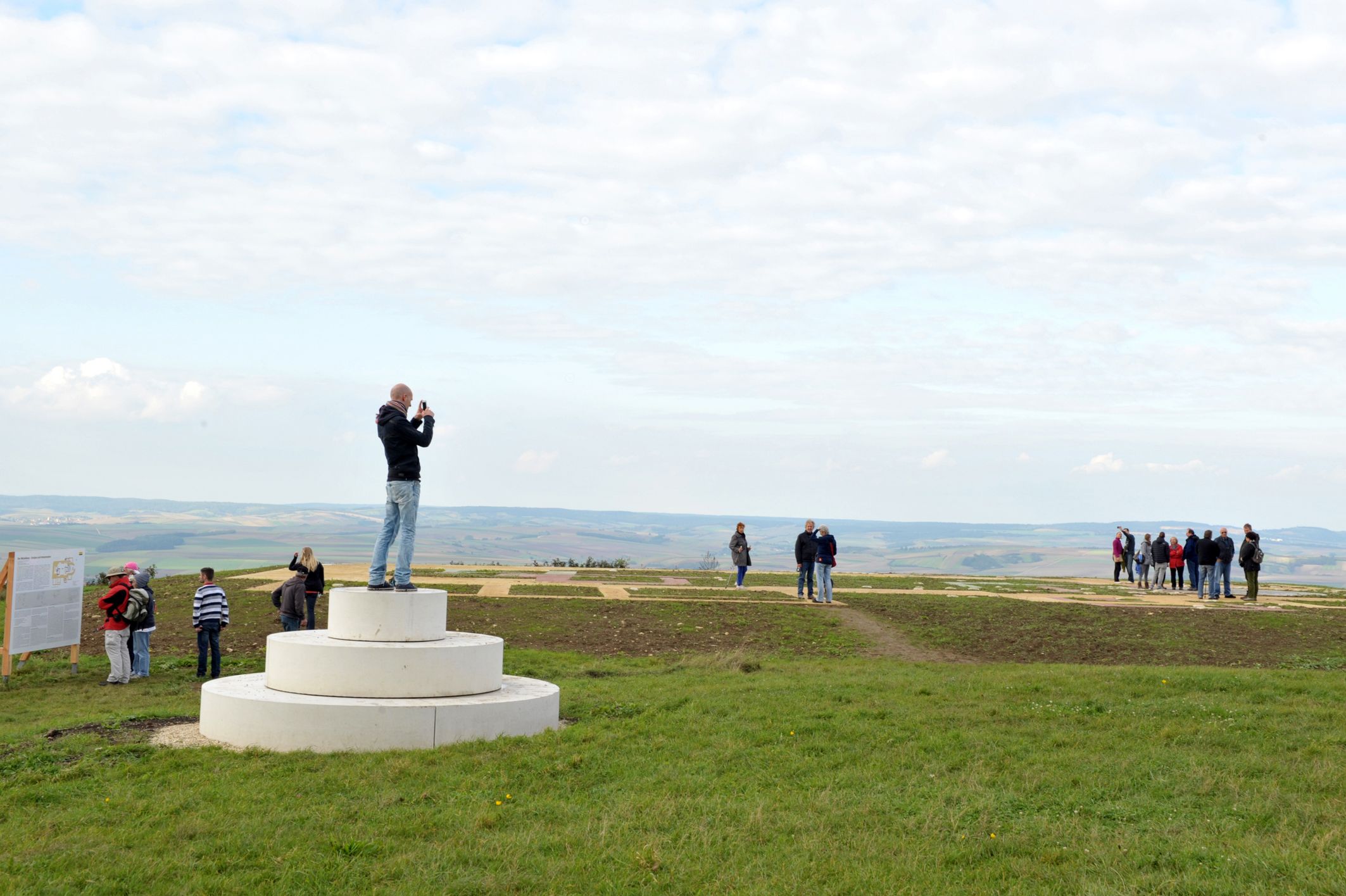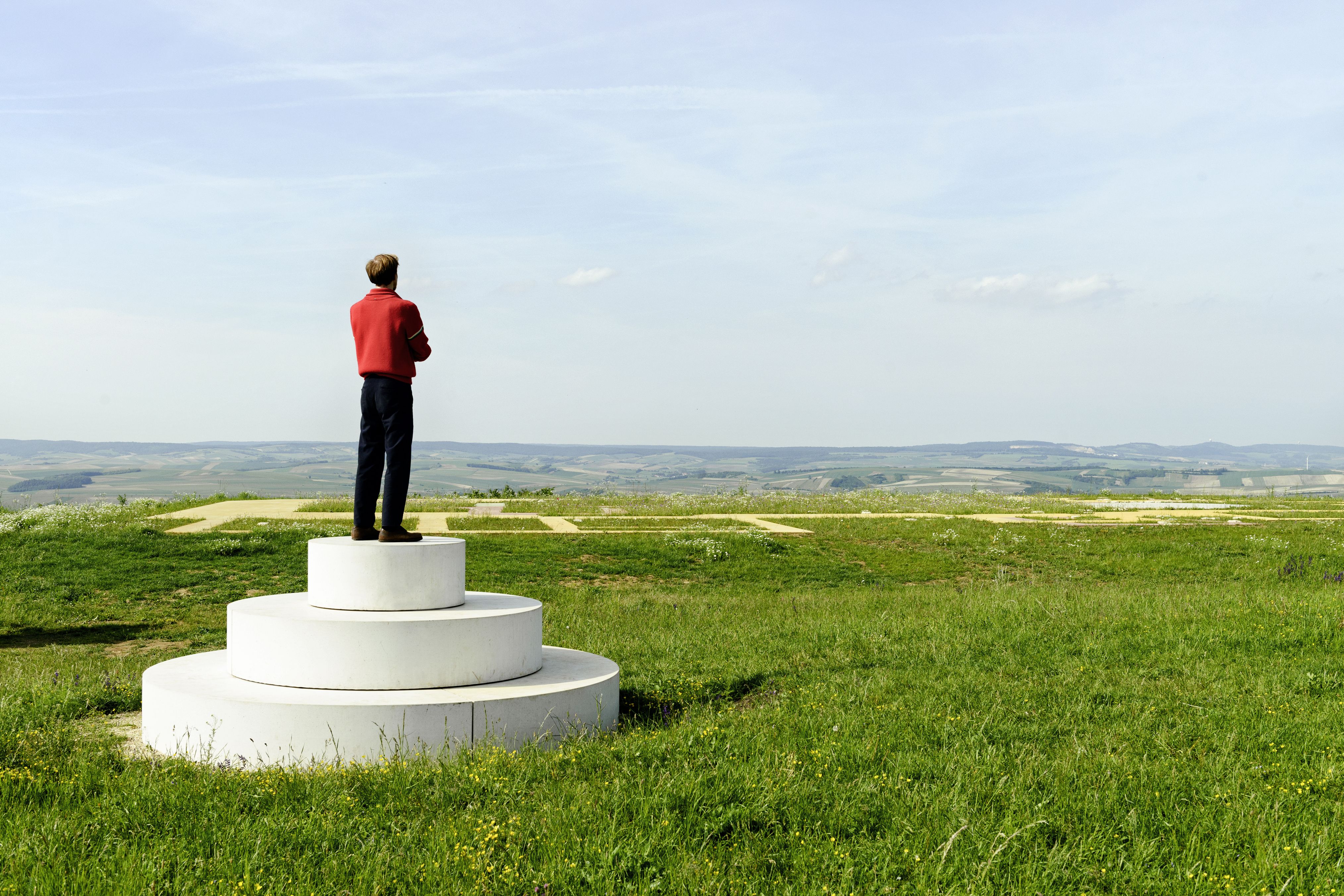Stefan Klampfer
:
Der Michelberg – Analyse und Interpretation
Back
Information
The last touches were made on Stefan Klampfer’s work Der Michelberg – Analyse und Interpretation (The Michelberg: Analysis and Interpretation) in the same week as the 75th anniversary of Sigmund Freud’s death. This calendrical coincidence heightens our awareness of the specific layers of remembrance that are at the core of this work. The project began with the competition’s challenge of creating an artistic approach to something that has become invisible: in other words, the decision to rebury for conservation reasons several parts of churches from the early modern, medieval, and Baroque periods, which had been excavated on site over a period of several years. The task for the artist was thus similar to that of a psychoanalyst – namely, to find a way to deal with experiences that have been buried or repressed.
This is also the task of archaeology, and an archeological analysis of the past site was conducted before the artistic intervention. Stefan Klampfer, who realized the work together with the architect Helmut Frötscher, not only refers to the archeological and psychoanalytical terminology of "analysis and interpretation" in the title of his work; he has also worked with the ground plans of the old churches discovered by the archeologists in his formal approach and integrated the material traces of memory in his design. In this way, the excavation and reburying of the site served as preparatory and creative acts for his own work, for artists must be able to make the most of a situation at hand both metaphorically and practically – or to override it if necessary – in order to develop a final form. In his approach, Stefan Klampfer gives the site’s architectural past a structure, while creating a way to visualize more than a thousand years of architectural and religious history. His approach of translating different levels of the excavation into an overall ground plan is methodical and can be easily grasped. Each phase of the church’s construction has been assigned a different color. The resulting ground plan is marked by two-dimensional, accessible concrete slabs reinforced with iron. Diverging from this basic pattern, the stones in the ground mark the places where the numerous graves for children have been found – one of the still not entirely understood particularities of this excavation site.
The fact that the romanesque and medieval periods are kept in the same color, a shade of red, which forms a contrast to yellow associated with the Baroque period shows how the artist dared to diverge from the idea of creating a purely educational tool for architectural history. Another alteration is even more noticeable in the form of the two large gray circular structures in Klampfer’s 1:1 scale ground plan, which stand out against the balanced layout of the church. These structures mark the most recent level of excavation: The two concrete circles are the remainders of a German Wehrmacht aerial observation station from the Second World War. By insisting from the beginning of his commission that this archeological evidence would be given equal attention in his representation – a demand that the archeologists discussed and consented to – Stefan Klampfer ensured that his own artistic analysis would not serve as yet another basis for repressing memories. Indeed, Klampfer’s work reminds us not only of the architectural and religious significance of Michelberg, but that its elevated position was also used for military purposes by the Nazi regime. Klampfer has thus managed to unite in a single image what was previously presented by two separate memorial stones: The one close to the parking lot praising only the beauty and rich cultural history of the viewpoint, while the other closer to the top of the Michelberg referring only superficially to the horrors of war.
Stefan Klampfer’s picture, sculpture, and intervention transform the reburied excavation site into a pictorial form of remembrance, with layers not only of centuries of time, but also of different forms of use. He thus refers to what exists under the surface, while also adding a completely new layer to the cultural landscape. He does this with confidence, using a material that will also survive for centuries. We cannot help but ask ourselves what interpretations his work will inspire, should a new generation of archeologists analyze the Michelberg in the distant future. As if thinking ahead about such reflection, the artist added two elements to his installation that encourage us to look closer, to reflect, and to take our time: a layered pedestal of concrete circles placed slightly apart from the installation that lets viewers survey the site and its surroundings from above, while new benches have also replaced the old seats next to the chapel. The work contemporizes the site, making history more accessible today and in the future. Thanks to the contemporary character of his artistic means and the presence of mind reflected in his installation, Stefan Klampfer allows us to reflect on the past, present, and future on Michelberg in Lower Austria.
(Martin Fritz)
Images (7)
